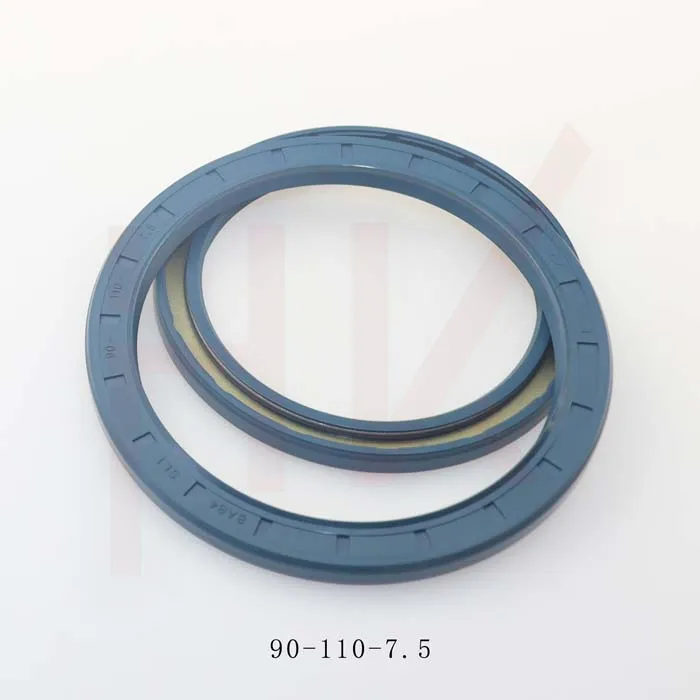ធ្នូ . 05, 2024 03:30 Back to list
Choosing the Right Material for Hydraulic Cylinder Seal Kits to Ensure Optimal Performance
Understanding Hydraulic Cylinder Seal Kit Materials
Hydraulic systems are integral to a wide range of machinery, from construction equipment to industrial machinery. At the heart of these systems lie hydraulic cylinders, which convert hydraulic energy into mechanical energy. A crucial component that ensures the efficient functioning of these cylinders is the seal kit. The performance and longevity of hydraulic cylinders largely depend on the quality and material of the seal kit used. In this article, we'll delve into various materials utilized in hydraulic cylinder seal kits and their respective advantages.
Types of Seal Kit Materials
1. Nitrile Rubber (NBR) Nitrile rubber is one of the most commonly used materials in hydraulic seals due to its excellent resistance to petroleum-based oils and fuels. The typical operating temperature range for NBR is between -30°C to 100°C (-22°F to 212°F), making it suitable for various hydraulic applications. Its elastic properties allow it to form effective seals, preventing fluid leakage. However, NBR can degrade when exposed to high temperatures and certain chemicals, making it less ideal for specialized environments.
2. Polyurethane (PU) Polyurethane seals are known for their superior wear resistance and can endure more extreme conditions than NBR. They are capable of withstanding higher temperatures and pressures, making them ideal for heavy-duty applications. Polyurethane is often used in high-performance hydraulic systems because of its high tensile strength and excellent elasticity. However, it can be less resistant to certain chemicals, so selecting the right type of polyurethane for a specific application is crucial.
3. Fluoroelastomer (FKM) Fluoroelastomer seals are engineered for applications involving harsh chemicals and extreme thermal environments. With an operating temperature range of -20°C to 200°C (-4°F to 392°F), FKM seals can resist degradation caused by a wide variety of fluids, including oils, fuels, and solvents. These seals are highly durable and maintain their elasticity over a wide temperature range, making them perfect for industrial applications where chemical exposure is a concern.
hydraulic cylinder seal kit material

4. EPDM (Ethylene Propylene Diene Monomer) EPDM is a synthetic rubber that exhibits excellent weathering, ozone, and heat resistance. It is particularly suitable for applications involving water and steam but is not ideal for petroleum-based fluids. Hydraulics that operate in environments with high humidity or exposure to various weather conditions often employ EPDM seals. Its temperature tolerance typically ranges from -40°C to 120°C (-40°F to 248°F).
5. PTFE (Polytetrafluoroethylene) PTFE seals are known for their outstanding chemical resistance and low friction properties, making them suitable for extremely corrosive environments. Although PTFE does not have the elastomeric properties of other materials, it is often used in conjunction with other seal materials to enhance performance. Its ability to function at high temperatures, up to 260°C (500°F), makes it an excellent choice for applications that demand thermal resilience.
Choosing the Right Material
When selecting the material for hydraulic cylinder seal kits, several factors must be considered. These include the type of hydraulic fluid being used, the operational temperature and pressure, and the specific environmental conditions the equipment will face. A thorough understanding of these variables will aid in making informed decisions, ultimately ensuring the reliability and efficiency of hydraulic systems.
Conclusion
The material choice for hydraulic cylinder seal kits is critical to the longevity and performance of hydraulic systems. With options like Nitrile rubber, polyurethane, fluoroelastomer, EPDM, and PTFE, each material possesses unique properties that cater to various operational needs. Understanding these materials' strengths and limitations will help engineers and technicians select the most appropriate seal kit for their specific application, thereby enhancing the hydraulic system’s effectiveness and reducing the risk of leaks and failures. By prioritizing the right material selection, organizations can optimize performance, enhance productivity, and minimize downtime in their hydraulic-operated equipment.
-
Unlocking the Potential of Hydraulic Systems with Essential Sealing Solutions
NewsAug.06,2025
-
Unleash the Power of Your Hydraulic Systems with Our Premium Seal Kits
NewsAug.06,2025
-
Specialized Hydraulic Seal Kits for Breakers, Pistons, and Presses
NewsAug.06,2025
-
Revitalize Hydraulic Systems with Premium Repair and Seal Kits
NewsAug.06,2025
-
Fortify Your Cylinders with Premium Sealing Solutions
NewsAug.06,2025
-
Elevate Hydraulic System Reliability with Specialized Seal Kits
NewsAug.06,2025
-
TCN Oil Seal Metal Ring Reinforcement for Heavy Machinery
NewsJul.25,2025
Products categories
















